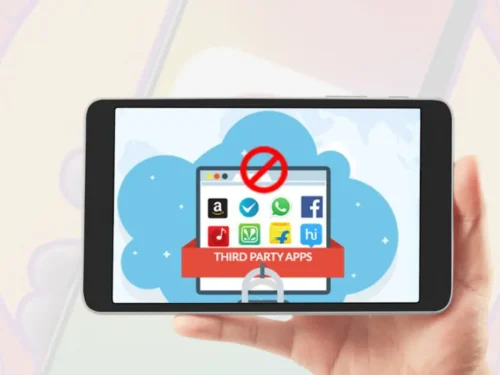The Ultimate A-Z Glossary Of Digital Advertising: Part 2
This is Part 2 of the digital advertising glossary series. In Part 1, we decoded many new terms (that people just throw like a football at meetings) which will help you to speed on all things digital advertising.
Continuing Part 2 of the digital advertising glossary series, let’s jump straight back in.
Native Advertising
Native advertising is the practice of using paid advertisements that have the look, feel, and function of the media format in which they appear. In an attempt to improve user experience, it blends seamlessly into the website content. As a result, it appears to be a natural part of the editorial flow of the page.
It is non-disruptive for the reader and catches immediate user attention. Below are native ads placement examples:
OTT Advertising
OTT is the advertising jargon for Over-the-top. The OTT advertisements are commercials that can be delivered on OTT platforms via streaming services.
OpenRTB (Real-Time Bidding)
The advertising terminology OpenRTB should not be confused with RTB(real-time bidding).
The OpenRTB protocol is adopted by Indian Advertising Bureau (IAB). It is used for communications between parties involved in media transactions via RTB. Essentially, OpenRTB aims to create a lingua franca for communication between sellers and buyers. It allows all DSPs, SSP’s and ad exchanges to use the same language for all online transactions.
Programmatic Advertising
A term that needs a special mention in the digital advertising glossary is “Programmatic Advertising.” It is projected to be the game-changer for digital advertising. Programmatic automates the process of buying and selling online advertising space with the help of technology and data. This means, with the introduction of programmatic publishers, advertisers or agencies don’t have to sit across to discuss ad size, rates, et. Ad buying is done through algorithms and data insights.
Programmatic media buying includes Real-time bidding (RTB), Programmatic Direct, and Private Marketplace (PMP).
Interesting Read: Programmatic Advertising Platforms in 2020: A Complete Guide
Prebid.js
Prebid.js refers to a collection of open-source JavaScript libraries offered by Prebid.org, the header bidding platform. It allows publishers to connect to over 150 SSP’s (Supply-side platform) that taps a wide range of advertising demand sources.
Prebid.org was created to help publishers manage their connections with a number of SSPs. Historically, each SSP had its own setup and complicated codes that were time-consuming. Prebid.js launches are simpler and improve the functioning of header bidding and lower page load times.
Interesting Read: Index Exchange Joins Hands with Prebid.Org to Deal with Industry Crisis
Real-time bidding (RTB)
Another term for the act is ‘Open Auction’and has to be a part of this digital advertising glossary. The buy and selling of digital ad inventory via real-time auctions that happen in milliseconds it takes for the web page to load.
Real-time bidding (RTB) auctions occur when advertisers (through Demand-side platforms (DSP)) buy individual impressions from publishers (via Supply-side platforms (SSP)s and Ad exchanges). It takes under 200 milliseconds from the time a bid request is placed until the ad is served in RTB. For perspective, the human eye takes 300 milliseconds to blink.
Remnant Inventory
A publisher who is unable to sell off the ad inventory via a direct or premium deal with advertisers.
Supply-Side Platform (SSP)
A supply-side platform (SSP) is software used by publishers to sell their display, video, and mobile ad inventory in an automated manner via real-time (RTB) auctions. SSP enables publishers to sell their ad inventory to the best network as it aids to improve the yield optimization of the advertising space inventory. It minimizes wasted space and maximizes views.
SSP plays a key role in the RTB media transactions as it connects to ad exchanges and DSPs to sell publishers (website and app owners) ad inventory.
Third-Party Cookies
The third-party cookies are stored in a domain other than the currently opened website(domain). Ad-tech platforms use advertising jargon for online advertising purposes. Advertisers or technology providers use scripts or tags to place on the consumer website by, and not website owners.
As an example, news websites create first-party cookies when you visit their website. Like other publisher’s sites, the news outlet uses ads designed by other websites that create a third-party cookie and store it on your computer.
Interesting Read: End Of Third-Party Cookies, What Is There For Marketers: Takeaway!
Unique user identifier (UUID)
Adtech platforms mostly use this advertising jargon. UUID is a set of data stored in a cookie used to identify and track user actions across various platforms. UUID can be used as an alternative method to PII (personally identifiable information) such as email id or contact details to identify users.
Viewable Advertising
The ad lingo ‘Viewability’ simply determines whether the digital advertisement has been viewed by a human being or not. The aim is to know if a user or a bot is viewing the ad. It will help the advertisers to measure the campaigns effectively.
The MRC (Media Rating Council) defines a video ad as “viewable” or “viewed” only if it had at least 50% pixels appear within the browser space for at least 1 second (for display ads), or 2 seconds (for video ads).
Walled Gardens
A walled garden is a closed ecosystem where the operator does not share information, technology, or data with third parties. The advertisers have limited or less access to customer data and less control over performance measurement. Examples of walled gardens are duopoly Facebook and Google.
Yield Optimization
This advertising terminology simply refers to the efforts taken by publishers and advertisers to maximize the revenue and extract the highest amount of value from ad serving efforts.
Publishers can improve yield rates through price floor adjustments, increasing the inventory value of their ads, and diversifying the advertising demand sources. Advertising yield rates can be improved by defining their target audiences precisely, develop effective bid strategies, and diversifying the supply sources.
Finally, There You Have It!
Digital advertising has plenty of advertising lingos, acronyms, and buzzwords. Our digital advertising glossary has decoded the meaning of the complex advertising jargon that is flying around all over the place. This glossary will simplify your understanding of advertising terminology.
Author Profile

- Neha Mehta
- Neha started her journey as a financial professional but soon realized her passion for writing and is now living her dreams as a content writer. Her goal is to enlighten the audience on various topics through her writing and in-depth research. She is geeky and friendly. When not busy writing, she is spending time with her little one or travelling.
Latest Posts
 Interview and Guest PostJuly 19, 2024Navigating Ad Tech: Equativ’s Jacqueline Chua’s Strategic Insights
Interview and Guest PostJuly 19, 2024Navigating Ad Tech: Equativ’s Jacqueline Chua’s Strategic Insights Interview and Guest PostJune 21, 2024CTV Exploration: Chandrahas Shetty, Demand Facilitation Lead, India, On Growth And Privacy
Interview and Guest PostJune 21, 2024CTV Exploration: Chandrahas Shetty, Demand Facilitation Lead, India, On Growth And Privacy Interview and Guest PostJune 14, 2024Advertising Evolution: Rasha El-Ghoussaini on Snap Inc.
Interview and Guest PostJune 14, 2024Advertising Evolution: Rasha El-Ghoussaini on Snap Inc. Interview and Guest PostJune 5, 2024Navigating Digital Waves: Shrenik Gandhi’s Journey with WRM
Interview and Guest PostJune 5, 2024Navigating Digital Waves: Shrenik Gandhi’s Journey with WRM










